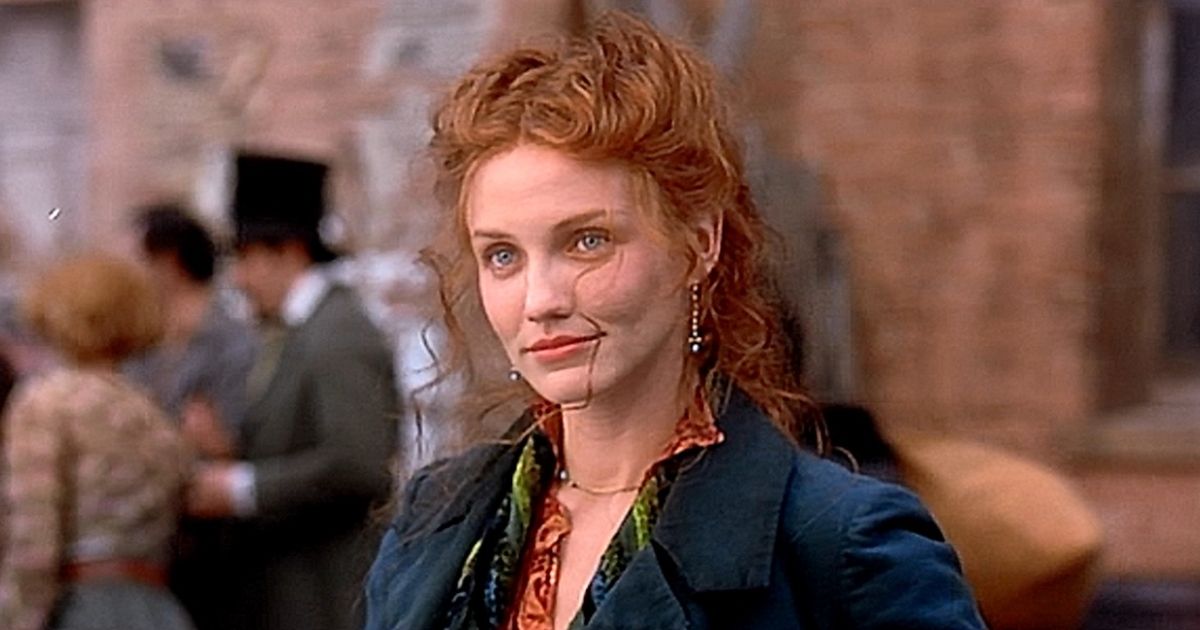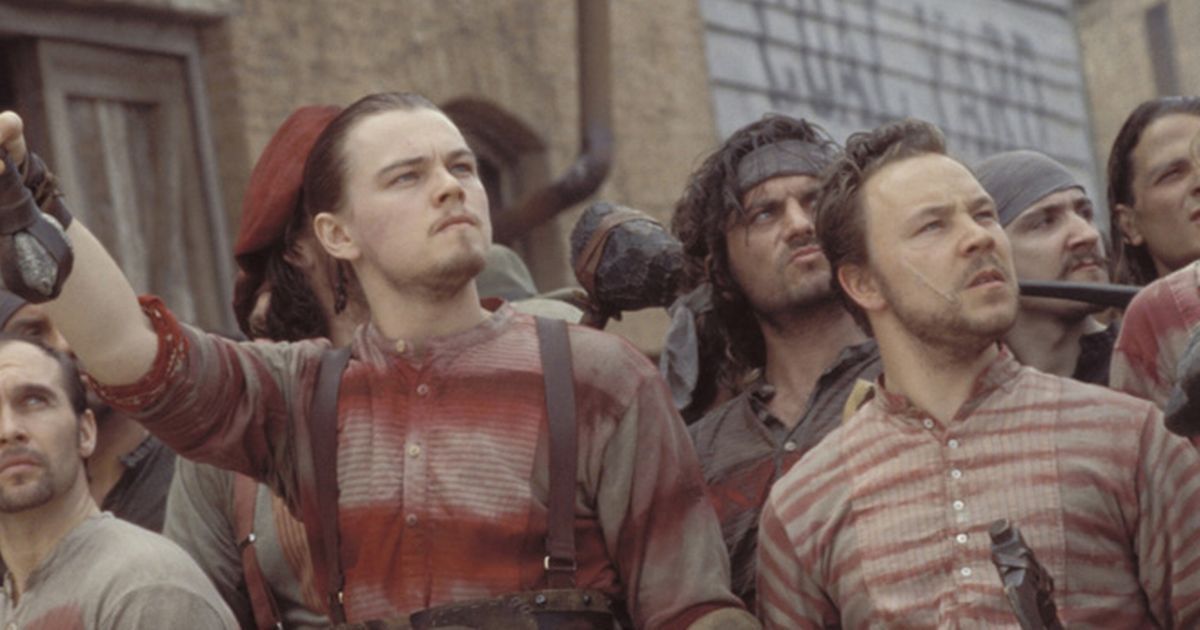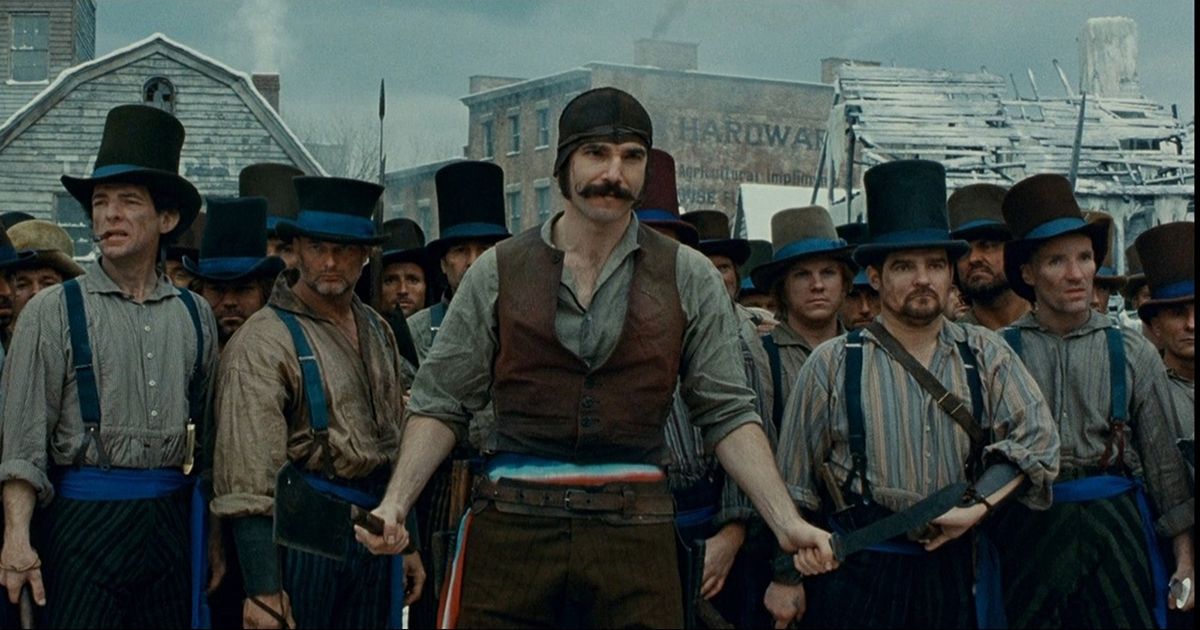Directed by Martin Scorsese, Gangs of New York enjoyed a successful theatrical run. With big stars such as Leonardo DiCaprio, Liam Neeson, Daniel Day Lewis, and Cameron Diaz, the project was sure to draw in loyal fan bases for this high stakes tale of family, honor, justice, and political control in the mid 19th century. The 2022 Martin Scorsese film Gangs of New York invites viewers to step into the tumultuous world of Irish immigrants in New York’s Five Points neighborhood. How much of what we see in the film is true to history, and how much is conjured up for cinema? The Gang Wars of New York were a very real issue in the 1850s-1860s, with the chaos giving way to the more unified struggle against the Civil War draft. Scorsese does, however, take substantial creative liberty in crafting a fictional narrative that flawlessly weaves into real life history.
Overview of the Film and Critical Reception
It is the year 1846, and the various gangs of the area fight for dominance of their territory. The film opens with the jarring and bloody struggle between the Dead Rabbits and the Protestant Confederation of American Natives. The Dead Rabbits, a Catholic clan of Irish-Americans, are led by Liam Neeson’s Vallon, a man clad with a priest’s collar and a cross as he braces to lead his gang into a battle. With his young son in tow, the Dead Rabbits face off with the Natives, a group of American-born men of Irish descent led by William “Bill the Butcher” Cutting (Daniel Day-Lewis). Cutting slays his enemy, Vallon, after a vicious fight between the groups. Having witnessed his father’s murder, Vallon’s son “Amsterdam” flees the scene as he ensconces the blade used in the act, a tool the audience will later be reintroduced to.
Amsterdam grows up in a New York orphanage, destitute and alone, but never forgetting the memory of his father– or those responsible for his death. Amsterdam re-emerges as a young adult played by Leonardo DiCaprio, re-entering the realm of the Five Points Gangs with a deadly mission. He seeks to avenge his father, infiltrating Bill the Butcher’s ranks. Armed with the knife that slew his own father, Amsterdam stays true to his mission as he deceives Bill and earns his trust. Just as young Amsterdam’s plans are ready to come to fruition, his vision of killing Bill, on the very anniversary of his father’s defeat manifesting, his scheme is ultimately exposed and thwarted by his friend, Johnny. Amsterdam and Johnny both share a love interest in Jenny, a bold ingenious but also beautiful pickpocket— except Jenny only has affections for Amsterdam, to the perturbation of Johnny. Jealousy over their romance leads Johnny to betray his friend, allowing Bill to anticipate the strike. As Bill plays a cruel game of tossing knives at Jenny, Amsterdam struggles to free her and becomes injured in the act.
Following the derailment of his plans, Amsterdam regroups and conspires anew, hatching a plan to manipulate an election in a conspiracy with William M. Tweed, the political boss of Tammany Hall. The plans crumble as the candidate they conspire to install is murdered by Bill, leading to the culmination of the fighting in one final showdown at Paradise Square. Set to the cacophony of the Union army subduing the draft riots nearby, Amsterdam finally achieves his vengeance by killing Bill with the knife he used to kill his father.
The film is certainly considered a triumph in Scorsese’s career, with the plot executing the vision with which the director undertook a very costly set design and production. The actors’ performances were likewise career successes, with heavy-weight names holding their own in each other’s presence. Though the film is considered a success and was well-received by critics and audiences alike, it is also largely regarded as only a modestly notable mark in Scorsese’s career, not quite overtaking some of his more classic works as the hallmarks of his craft. Regardless, the world of 1860s New York will be revisited with the upcoming Gangs of New York television series in the works, with Martin Scorsese leading the project as director once again.
The True Story
Much of the groundwork for Scorcese’s story is rooted in the true history of New York’s gang-ridden Five Points neighborhood. The Dead Rabbits, The Bowery Boys, The Short Tails, and the Gopher Gang were a few of the groups that ran amuck in the crime-infested city. Their story shows that America was forged through less glamorous means than the struggles for idealism proclaimed by the founding fathers. The real America, for much of the 19th century, was found here in the streets among the common people that the government ignored. In the shadows of the damp tenement halls stood the men and women that moved the tides of American politics without their names being immortalized in history. America, the land of the free and home of the brave, has also historically been the home of some rag-tag, rough-around-the-edges characters without which the progress we know may have never been born.
Though Vallon was a fictional character produced by Scorsese, Bill the Butcher was very much real as well. His name was William Poole, and he led the Bowery Boys, among other groups. As protestants of English descent, the central motivation of these groups was to oppose the influx of Catholic refugees fleeing the Irish famine. Poole actively terrorized immigrants into not voting, looking to establish racial and religious dominance for protestant Anglo-Saxons against Catholics, Italians, and Jews. Despite his criminal affiliations, Poole was elected to public office and promoted by the Whig Party. He died before the onset of the Civil War, with Scorsese extending the character’s life for the sake of the story. So too was William M. Tweed a real figure, an eventual U.S Senator notorious for his vast wealth and allegations of corruption. His career fell to ruin as a scandal broke of embezzlement within Tweed’s political ring.
The Draft Riots were also real, as working-class society broke into upheaval over the Civil War draft. The primary gripe was that the rich were able to dodge this draft by paying their way out, leaving already vulnerable families to sacrifice their own. The riots became so intense that President Abraham Lincoln had to send a subset of his troops into New York directly following their victory at the Battle of Gettysburg. These riots had devastating consequences for the protestant and African-American communities, with their being the primary targets of the mob’s misplaced rage. The characters of Amsterdam, Jenny, and Johnny, while providing heart and complex heroism to the film; were entirely fictional.


